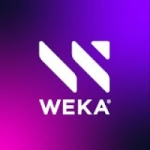What is our primary use case?
The primary use case is to augment our sales processes, to help our call center determine which customers to call, which products to push to those customers.
Thus far it's been pretty effective. In a recent sample that I pulled, it successfully predicted two-thirds of our sales in a given week.
We're running batch, overnight, and I believe we have three machine-learning models in production at the moment.
We have separate models for our US call center and our UK call center. Each one is designed to do a customer recommendation, where it determines which customers should be ready to buy today, based on the recency of their last purchase, how frequently they purchase. And then it scores the opportunity with that customer, based on how much money they spend with us. It gives the salesmen a ranking of which customers are their biggest opportunity on that day, and they just go down that list and call them. It generates pretty good sales.
And then we have a second model that does item recommendations, based on some association modeling. The association model tells the sales rep what product that customer should be buying, based on their sales purchase history.
We're on-prem. I find the on-prem to be a pretty seamless experience, it flows directly from our data warehouse into the Analytics Server, and then we're able to deploy it back to the data warehouse for deployment into our CRM system.
How has it helped my organization?
The benefits are that this product makes us a more efficient sales staff. We're reducing the inefficiencies in the buying patterns of our customers, by calling them when we know they're ready to order, instead of waiting for them to call us. It makes us more effective in our calling practices as well. We're not just cold-calling anymore, we're actually calling customers we know are ready to buy.
In terms of our go-live process changing, I believe we're following some pretty standard practices there. I don't think we've changed too much, other than which servers we were using as production servers.
What is most valuable?
I think the ease of use in the user interface is the best part of it. The ability to customize some of my streams with R and Python has been very useful to me, I've automated a few things with that.
We don't use SPSS Modeler for governance or security issues.
Regarding visual modeling, it is not the biggest strength of the product, although from what I hear in the latest release it's going to be a lot stronger. I'm excited to see what they have coming down the line, because I know that's an area they've focused on the most recent release, and I'm not on the recent release yet. I haven't really been able to leverage it to make any productivity improvements with our data science or analytic teams. Most of my visualization gets done through Cognos.
What needs improvement?
Like I said, I'm really excited about the enhanced visualization that I know is coming down the pipeline. That, to me, has always been the biggest flaw in using this. It's very difficult to get good visualization.
I think mapping for geographic data would also be a really great thing to be able to use.
Also, I think it could be marketed better, actually. I think there's a lot of confusion among customers about whether they should be using SPSS Modeler, or DSX. And even some of the partners I've spoken to about it, they've given me some conflicting opinions on which one I should be using at my level of scale.
What do I think about the stability of the solution?
I haven't had many issues with stability. The only stability concern I ever had was just certain credentials, if the job failed multiple times it deactivated the credentials, and then became a whole process with IT to get the credentials reactivated to get the stream running again.
What do I think about the scalability of the solution?
Scalability is infinite, because it can just spit out straight to our enterprise data warehouse, and we can use that to deploy anywhere.
How are customer service and technical support?
I haven't needed technical support. The product works pretty well.
Which solution did I use previously and why did I switch?
I came to the World of Watson Conference in 2015, and when I saw SPSS Modeler and what it could do, I just sampled it, and it really, to me, spoke volumes about some of the inefficiencies in the way we were doing business. And, as a brand new BI practice at a company that never had one before, I was just trying to build my practice from the ground up, and I didn't want to limit it to just BI reporting, so I took on the challenge of bringing in this new software, and staking my reputation on it, and it's paying off.
The reasons we eventually chose this solution were that we were made a very good deal on the Gold package, which gave us more capability. I think without Collaboration and Deployment Services it wouldn't have been a worthwhile investment for us and it would have failed on the deployment. So that deal we got on the Gold package really sealed the deal for us.
What's most important when selecting a vendor is the proven practice of the product. Knowing that the product has had success for numerous other customers in the past for similar use cases, for similar types of customers. I think knowing that there are a variety of partners out there with expertise in the product is a very strong selling point for me. I don't like going to things where I can't get help, if I get stuck.
How was the initial setup?
It was a little complex, but the person we work with, Chris Thomas, did a fantastic job walking us through it.
There were just a lot of steps and components to it. We bought the Modeler Gold package, so we had to consider CNDS, we had to consider ADM - we had a whole bunch of different components that had to get set up simultaneously. And when upgrading, we have to upgrade all of those components simultaneously in order to keep using it.
Which other solutions did I evaluate?
We ended up working directly with an IBM partner, but we also worked with Revelwood and LPA.
What other advice do I have?
I'd give it a nine out of 10. I really think that for someone who is not the strongest programmer on the planet, but is trying to learn and trying to put together some of these basic data science projects, it's a really valuable tool, the UI is very user friendly. So, it definitely launched my journey into becoming a data scientist, and three years later I'm becoming a lot stronger with it.
In terms of advice, the right partner can make all the difference. You need somebody who you can bounce questions off of when you get stuck, because you're going to get stuck, it's just inevitable. If you haven't implemented data science and predictive modeling before, you're always going to hit a challenge that is unique to your data, or to your process, and you need somebody who can lend the weight of experience to just talk you through it.
Disclosure: My company does not have a business relationship with this vendor other than being a customer.














